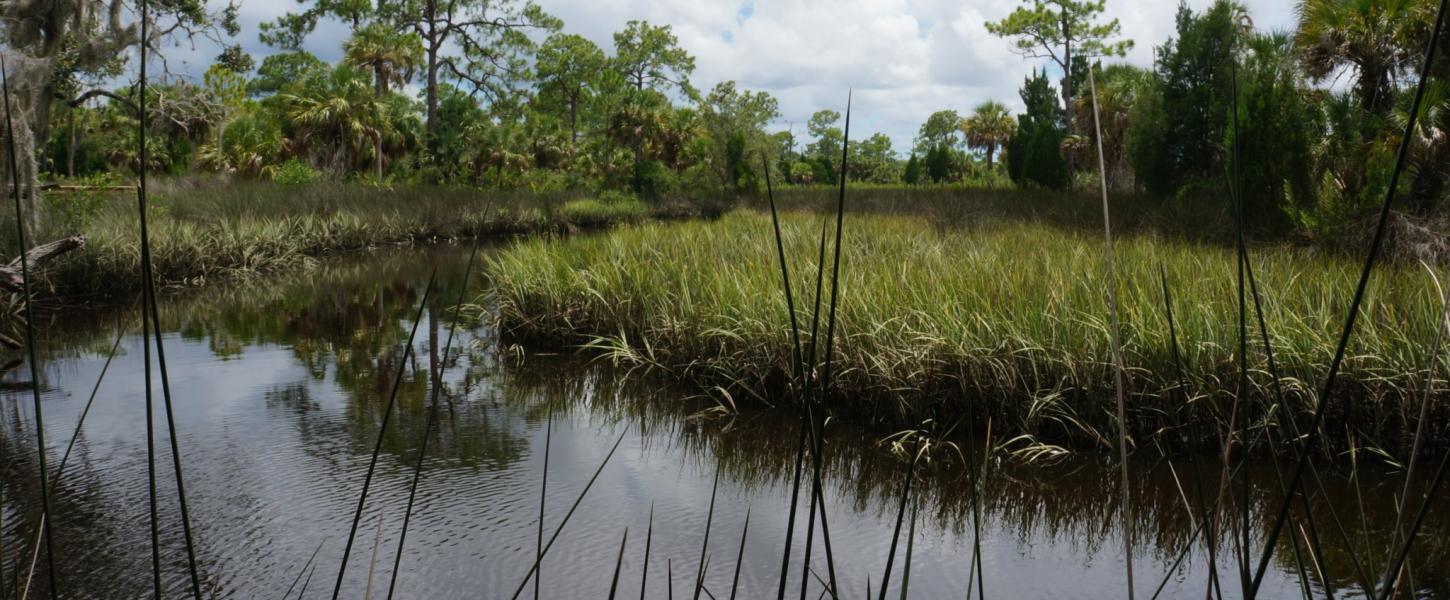History of Werner-Boyce

The Board of Trustees of the Internal Improvement Trust Fund (Trustees) acquired the initial area on Werner-Boyce Salt Springs State Park on December 31, 1992. Since the initial purchase, additional lands have been added to the park through a donation from Pasco County, and acquisitions under Preservation 2000 Additions and the Florida Forever Additions and Inholdings programs. On July 3, 2000, the Trustees conveyed management authority to the Florida Department of Environmental Protection under lease. This lease is a 50-year lease that became effective on July 1, 2000, and will expire on June 30, 2050. In addition, on July 3, 2000, leased 1,685-acres from Pasco County to manage this property, which was purchased with Florida Communities Trust Funds, as part of Werner-Boyce Salt Springs State Park. Currently the park contains 3,999 acres.
Throughout time this parcel has had many uses.
Artifacts found within the park boundaries have so far shown that the Tocobaga tribe used the area as a quarry site for lithic tools derived from the limestone formation although no signs of permanent residence have been noted. The land looked very different at that time as the abundance of exotics that took hold over the last 60 years did not cover the maritime hammocks. It is the mission of the park to restore these areas to their natural condition and much of this work has been completed.
Cattle grazing and Turpentining were common practice throughout the early 1800s and it was through cattle grazing that the salt springs were discovered by the first modern settlers. In the early days of cattle grazing on the property the owners noticed that the cattle preferred certain springs over others, they then discovered that these were salt springs and the cattle enjoyed licking the salt off the rocks surrounding the springs. One of these springs, now named Reflection Spring, popular with the cattle can be viewed today as it has been restored to its natural condition.
During the Civil War salt production became an important asset to the Confederates as the Union destroyed every salt works they could find. Salt works were set up on this property and were some of the only salt works in the state to never be dismantled by the Union soldiers. This was due to the inaccessible nature of the springs, soldiers would have to board row boats and travel as much as a mile inland to find the salt works. Additionally, with the springs proving salt water so far from the coast the Union soldiers were unaware that the smoke rising from the ovens had anything to do with salt production.
In the 1920s through the 1980s mullet fishing was extremely popular in the bayou waters of the park. Modern net regulations changed the mullet industry heavily in 1994 and this lifestyle was lost to history. Due to the importance of mullet fishing in this area we have built an ADA accessible 25 ft. mullet skiff that is on display in our main park. A sign interpreting the history of mullet fishing is located near the boat.
World War II aircraft flying to bases in Florida can be found throughout the park, expended 50 caliber cartridge casings, as these planes tested their armaments before final transport to Europe to support the war effort. Many of the small ponds throughout the park are remnants of bomb craters created by these intrepid pilots.
In the 1950s and 1960s, developers attempted to drain the park. This was during the Florida land boom and many areas were sought for housing and commercial development. The mosquito ditches dug throughout the park remain today and are the only remaining sign of that period of this park’s history.
Currently the park is being restored to its original state while efforts are being made to educate the public to its unique history through the use of static displays and educational kiosks. Trails are being added or extended constantly, as well as a new boardwalk and observation platform at the new restroom. All efforts are made to protect and preserve the natural habitat while ensuring that all visitors have access to explore this beautiful slice of the Real Florida.